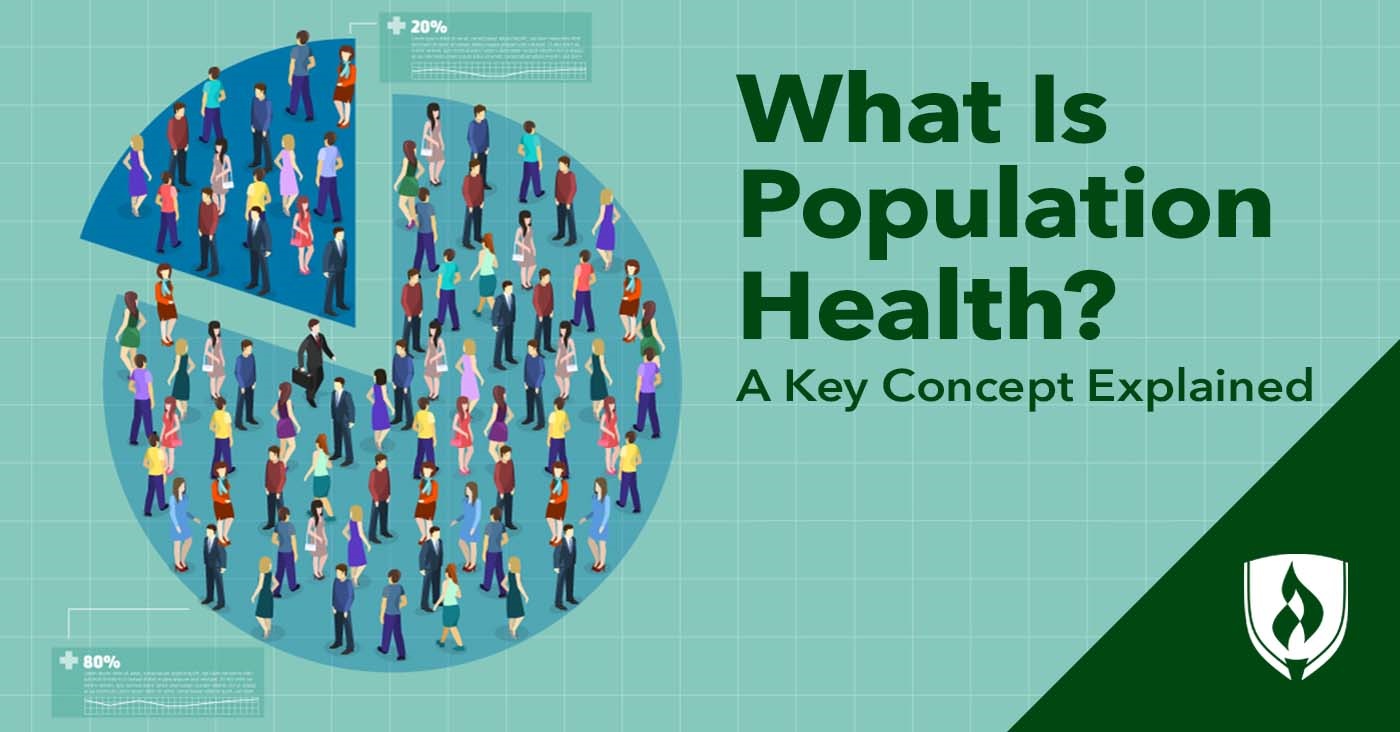
Healthcare is a massive field that affects practically everyone. With such far-reaching impacts and ubiquitous importance, it’s no wonder that this field is intertwined with a host of important medical, scientific and sociological research efforts.
One concept that sits at the intersection of it all is population health. It’s a key term used by healthcare professionals and public policy experts alike—but what does it mean? At a high level, population health is the study of the factors that influence a population’s well-being, but there’s a lot more to this concept to unpack.
Read on to learn more about how population health is defined and how it fits in the broader study of public health.
What is population health?
Simply put, population health is the study of health outcomes found in a group of individuals. It’s often used as a way to determine the overall health of a community or subset of the population, and it can be used to identify macro-scale trends for further investigation.
On one level, population health keeps an eye on threats to general public health. Are infectious outbreaks happening? How many people are smoking or struggling with obesity? What is the average life expectancy of this group?
But on another level, population health takes a step further. Instead of merely determining the average health of the people in a specific location, this approach also looks at health outcomes and issues by demographic or other defined characteristics. For example, a population overall may have a comparatively low rate of a type of cancer, but closer inspection may find that a specific ethnic group within the population has an elevated rate. Or maybe there’s a clear divide in health outcomes based on income levels or gender groups. These findings can help spur further investigation and research into what’s at the root of the difference.
While we often treat healthcare as an isolated area of our lives, it directly impacts—and is impacted by—everything we do. Population health seeks to understand these connections.
Population health vs. public health
If you’ve looked into public health at all, some of these ideas might sound familiar. Public health is a field that promotes the health of people and communities through preventative and reactive measures. This includes working to prevent the spread of infectious diseases, promoting healthy behaviors and more.
The important work of public health can easily intersect with population health, as both seek to understand and improve large-scale health outcomes. That said, there’s some debate regarding how to define and separate the concepts of public health and population health. Part of this confusion between the two is that the term “public health” is often used in government when referring to budgets and policies for influencing change.
“Traditionally, public health has been understood by many to be the critical functions of state and local public health departments such as preventing epidemics, containing environmental hazards and encouraging healthy behaviors,” according to Improving Population Health.1 The organization points out, though, that governmental public health policies do not always encompass major population health factors like education, healthcare access and income levels.
Public health may involve more policy changes to educate and promote well-being, but there’s still a lot of fundamental crossover between public health and population health. Both seek to understand healthcare outcomes and issues beyond the clinic or hospital and beyond an individual-focused basis.
For a bit more distinction, population health—like public health—tends to focus on particular groups of people. But, it goes further by looking at all the environmental or societal elements that impact their health. Population health topics include medical care coverage, public health interventions, genetics and behavior, along with employment, culture and physical environments like urban design, clean air, water, etc.
Examples of population health issues
According to the Population Health Forum, we can measure the health of a population by:2
- Life expectancy
- Infant mortality
- Death rates
- Disability
- Quality of life
- Self-assessed health
- Happiness and well-being
But population health issues also include the major factors that impact the health of a group of people. These issues often relate to the very structure of society and expand beyond medical practices or healthcare, such as:
- Income inequality
- Political, economic and social status
- Gender
- Race
- Education
- Social capital/social cohesion (i.e., do people participate in their community?)
- Psychosocial relationships
- Access to food, clean water, shelter and a safe environment
- Poverty
Making population health a part of your work
Now that you know more about the concept—how does the study of population health overlap with careers in healthcare and health sciences? Let’s take a look at a few areas of overlap.
One monumental and relatively recent change influencing population health is the widespread adoption of electronic health and medical records. These electronic records are managed by health information professionals and store important patient health and treatment data. When these records are electronically compiled and appropriately anonymized, they can provide a wealth of important data for monitoring diseases, improving treatments, identifying prevention opportunities and conducting research.
In addition to the direct patient care and health information roles that intersect with population health, there are also a variety of public health roles that overlap with this field. That can be in the form of a government researcher or epidemiologist studying how disease spreads among a population. Or it could be a healthcare policy analyst exploring the impact of factors like expanded access to preventative care and how that influences health outcomes among different populations. Biotech companies, medical device manufacturers, healthcare providers and researchers within related fields all may have an interest in the study of population health.
Looking to influence positive change in healthcare?
There are many essential branches of work in health that focus on prevention and macro-level solutions. Population health, public health, community health, epidemiology, healthcare education—the list goes on! These areas of study overlap, creating a mosaic of professionals, ideas and programs dedicated to improving health everywhere.
If you are interested in work that could guide and influence healthcare policy to improve overall health outcomes, you might be curious to see what an education in these areas would look like. A Master of Public Health degree can help expand your knowledge and open up new opportunities in this impactful field. If you’d like to learn more, check out “6 Things You Should Know About the Rasmussen University Master of Public Health Program.”
1Dave A. Kindig, “What Is Population Health” Improving Population Health, University of Wisconsin Department of Population Health Sciences. [Accessed April 2022] https://www.improvingpopulationhealth.org/blog/what-is-population-health.html
2“Issues” Population Health Forum, University of Washington School of Public Health [accessed April 2022] https://depts.washington.edu/eqhlth/pages/issues.html




